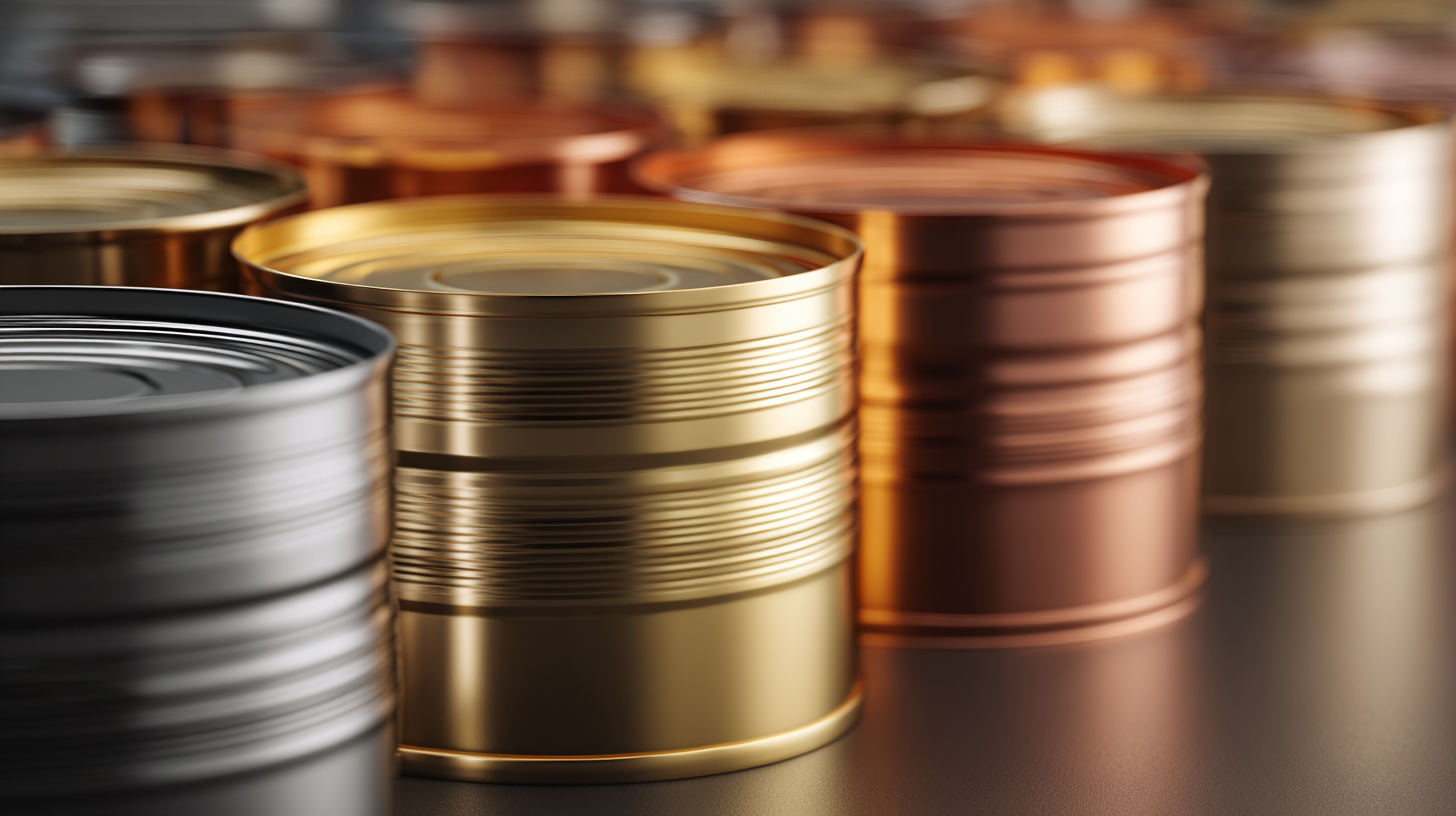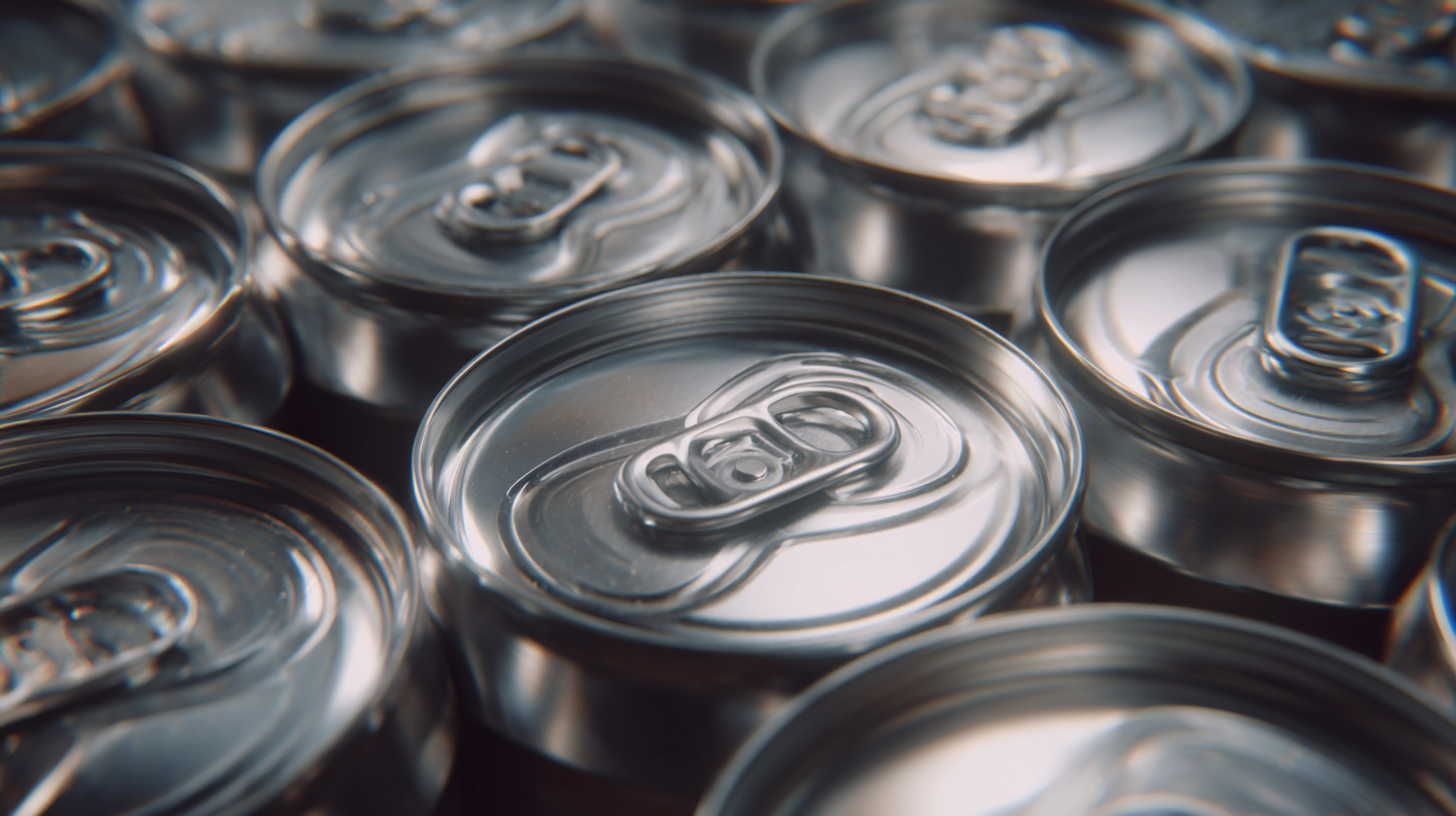 +817089618688
+817089618688
Free Standard Samples can be provided for you to check the quality.
Leave Your Message
As the world increasingly pivots towards sustainability, the packaging industry stands at a crucial crossroads, and the Food Metal Can sector is no exception. This blog will explore the transformative journey of Food Metal Cans, highlighting their enduring advantages and versatility in the modern marketplace. With growing environmental concerns and consumer demand for eco-friendly solutions, the food metal can industry is revolutionizing its practices to meet these challenges. By examining the various types of metal cans available, their unique characteristics, and their suitable applications, we can better understand how these containers not only serve to preserve food but also play a pivotal role in reducing waste and enhancing sustainability. Join us as we delve into the future of sustainable packaging and discover how Food Metal Cans are leading the charge towards a greener tomorrow.

 The drive towards sustainable packaging is reshaping the food metal can industry, with innovative eco-friendly materials taking center stage. These advancements focus on utilizing renewable resources, which significantly reduce environmental impact while maintaining the integrity of the packaging. Technologies such as industrial origami manufacturing techniques are enhancing efficiency and reducing waste, while life cycle assessments ensure that these new materials have a lower carbon footprint throughout their lifespan.
The drive towards sustainable packaging is reshaping the food metal can industry, with innovative eco-friendly materials taking center stage. These advancements focus on utilizing renewable resources, which significantly reduce environmental impact while maintaining the integrity of the packaging. Technologies such as industrial origami manufacturing techniques are enhancing efficiency and reducing waste, while life cycle assessments ensure that these new materials have a lower carbon footprint throughout their lifespan.
In addition, the rise of green hydrogen as a sustainable energy source is impacting various sectors, including metal manufacturing. By utilizing green hydrogen, companies can reduce CO2 emissions during the production of metal cans, facilitating a transformation toward more sustainable practices. With a keen focus on innovation, the integration of AI technologies is optimizing factory processes, leading to efficient production methods that further support sustainability goals.
As the industry evolves, these eco-friendly materials and revolutionary manufacturing techniques will define the future of metal packaging, making it a critical player in the quest for a greener planet.
As the food metal can industry moves towards sustainability, technology plays a crucial role in enhancing packaging solutions. Innovations in materials, such as the rise of biodegradable and recycled options, are transforming how products are packaged, thus minimizing environmental impact. For instance, advances in biodegradable polymers are allowing manufacturers to produce cans that are not only effective in preserving food but can also decompose naturally, reducing landfill waste.

Moreover, automation technology is streamlining production processes, increasing efficiency and reducing carbon footprints. Packaging automation systems enable precise filling, labeling, and sorting, which enhances resource management and cuts down on excess material usage. With the growing demand for sustainable practices, the integration of technology into packaging not only addresses consumer concerns but also fosters a competitive advantage for companies willing to adapt to these changes. The future of sustainable packaging hinges on these technological advancements, ultimately leading to a more eco-friendly food packaging landscape.
The food metal can industry is undergoing a transformative shift towards sustainability, with numerous case studies highlighting successful implementations of green practices. One noteworthy example is the adoption of recycled aluminum in can production. Companies like Ball Corporation have invested in advanced recycling technologies that allow them to create cans from 100% recycled materials, significantly reducing their carbon footprint. This shift not only conserves natural resources but also meets the increasing consumer demand for environmentally friendly packaging.
Another impressive case is that of Crown Holdings, which has pioneered initiatives to improve energy efficiency in their manufacturing processes. By integrating solar power into their production facilities, Crown has cut greenhouse gas emissions while generating over 20% of their energy needs from renewable sources. Their commitment to sustainability is evident through their comprehensive recycling programs, which encourage consumers to return empty cans for reprocessing, thereby closing the loop in the packaging lifecycle. Such innovative practices not only bolster the industry's reputation but also demonstrate a clear path forward in the quest for sustainable packaging solutions.
As consumer preferences continue to evolve, the demand for sustainable packaging is reshaping the landscape of the food metal can industry. Notably, materials like polypropylene (PP), polyethylene (PE), and polyethylene terephthalate (PET) are becoming increasingly relevant. These materials offer not only functional benefits such as durability and recyclability, but they also align with the growing consumer urgency for environmentally responsible choices. Consumers are particularly mindful of the environmental impact of packaging, leading to a shift towards options that prioritize sustainability without compromising food safety and shelf life.
Recent trends also indicate a surge in preference for innovative applications that use sustainable packaging. Products ranging from trays and lids to cups and containers are being scrutinized for their environmental footprints. This growing consciousness is not limited to food packaging; it reflects a broader cultural shift in how brands and consumers interact with sustainability.
In the fashion industry, parallels can be drawn as companies explore eco-friendly materials and practices, adapting to the values of the millennial and Gen Z demographics. As sustainability continues to take center stage, brands across sectors are compelled to rethink their packaging strategies and align them with consumer expectations, driving a significant transformation in the market.
The food metal can industry is on the brink of a transformative era, facing challenges that require innovative solutions. One primary challenge is the increasing demand for sustainable packaging solutions. Consumers are becoming more environmentally conscious, pushing companies to reduce their carbon footprints. This involves not only utilizing recycled materials but also exploring new manufacturing processes that minimize waste and energy consumption. How the industry addresses these challenges will set the tone for its future sustainability efforts.
On the other hand, opportunities abound in the sustainable packaging landscape. Advances in technology, such as the development of biodegradable linings and improved recycling technologies, offer a pathway toward greener food metal cans. Furthermore, collaborations between manufacturers, environmental organizations, and policymakers could enhance regulatory frameworks, promoting eco-friendly practices. Embracing these opportunities will enable the food metal can sector to cater to evolving consumer preferences while fostering a more sustainable future. The balance between addressing challenges and seizing opportunities will be crucial for the industry’s growth and reputation in the coming years.
